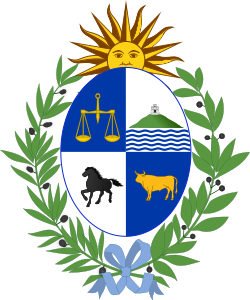30 November 1958 | ||||||||||||||||||||||||||||||||||||
| Registered | 1,410,105 | |||||||||||||||||||||||||||||||||||
|---|---|---|---|---|---|---|---|---|---|---|---|---|---|---|---|---|---|---|---|---|---|---|---|---|---|---|---|---|---|---|---|---|---|---|---|---|
This lists parties that won seats. See the complete results below. | ||||||||||||||||||||||||||||||||||||
This lists parties that won seats. See the complete results below. | ||||||||||||||||||||||||||||||||||||
This lists parties that won seats. See the complete results below. | ||||||||||||||||||||||||||||||||||||
 |
|---|
General elections were held in Uruguay on 30 November 1958, alongside a constitutional referendum. [1] Following the end of a schism between the National Party and the Independent National Party, the National Party received almost half the vote, winning a majority of seats in the National Council of Government, the Chamber of Deputies and the Senate, and allowing it to lead the government for the first time since 1865. [2]
Contents
As per the electoral rule, all nominees (Martín Echegoyen, Benito Nardone, Eduardo Víctor Haedo, Faustino Harrison, Justo M. Alonso and Pedro Zalbalza) of the Herrerism group of the National Party, as the most-voted group of the most-voted party, were elected as members of the National Council of Government, with the first four as presidential members and the remaining as non-presidential members. The remaining seats were filled by the first two nominees of the most-voted group of the second-voted party, and the first nominee of the second-voted group of the same party, who were Manuel Rodríguez Correa and Ledo Arroyo Torres of the "Fifteenist" Batllism group and César Batlle Pacheco of the "Fourteenist" Batllism group.

